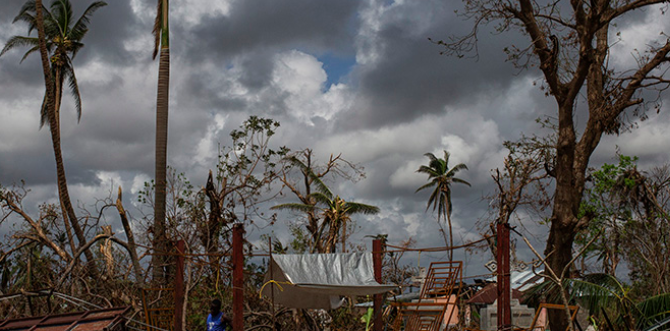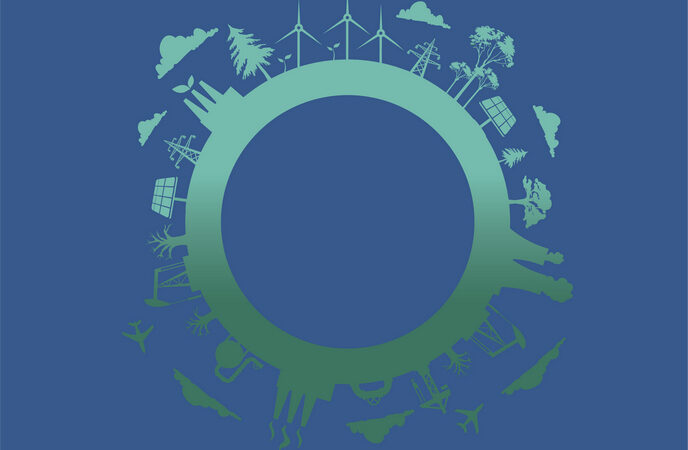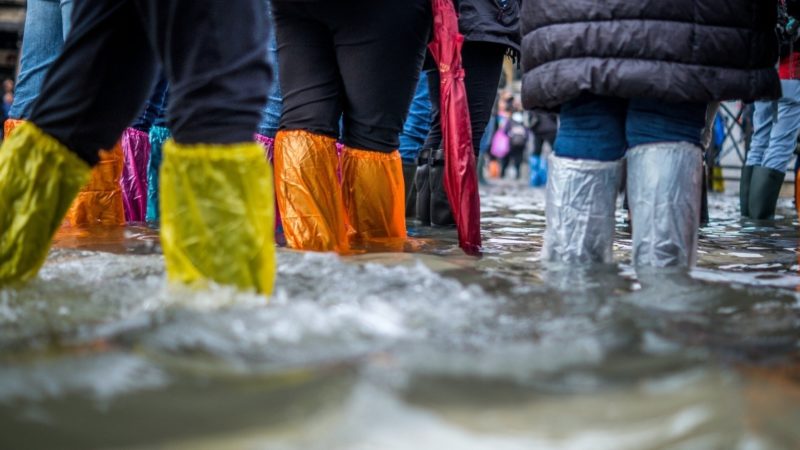YASUYUKI SAWADA
Chief Economist, ADB
Developing countries in Asia are, sadly, often the hardest hit by the increasing number of disasters worldwide. The region is home to more than 80% of about 206 million people affected by disasters globally each year. It also accounts for more than half of the world’s 60,000 disaster fatalities each year. The December 2004 Indian Ocean tsunami alone killed more than 200,000 people while the May 2008 earthquake in Wenchuan, China, left more than 87,000 people dead.
The situation stands to become even more perilous in the years ahead. Climate change is causing more frequent and more intense natural hazards while rapid socioeconomic development means more homes, businesses, and infrastructure are under threat. This “perfect storm” has made Asia and the Pacific more vulnerable than ever.
The images of dramatic rescues during these harrowing disasters are well known, and the progress in swiftly rebuilding the damaged areas has been impressive of late, contributing to implementation of SDG target 13.1 on strengthening resilience and adaptive capacity to climate-related hazards and natural disasters. But an often-neglected aspect is the indirect human and economic toll that is still felt years, even decades, after the disaster. This has far-reaching impacts on sustainable development in the region, and compromises the achievement of many SDGs ranging from SDG 1 on poverty and SDG 2 on combating hunger right through to SDG 15 which seeks to protect life on land.
Typhoons have been linked to higher infant mortality among baby girls in the Philippines up to two years after the original incident. Children who lost parents to the tsunami in Indonesia spent less time in school as they assumed parenting duties to younger siblings. Lower nutrition during lean drought years in India has led to low-weight newborns or stunting. In these ways, the fallout of disasters creates barriers to countries reaching the targets of SDG 4 on quality education and SDG 3 on good health and well-being.
Disaster impacts can also transmit far beyond the disaster epicenter through temporary migration or permanent resettlement. Rural populations fleeing to cities after floods or droughts can spark social disorder or conflict while displaced populations can find themselves exposed to other hazards, such as epidemics, that they could have avoided at home.
Disruptions to global value chains mean disaster impacts also reverberate beyond the affected area as companies are unable to supply crucial goods to buyers elsewhere in the country or even beyond. The March 2011 earthquake and tsunami in Japan and flooding in Thailand later the same year caused local production stoppages that forced firms in the US and Europe that relied on the Japanese or Thai intermediate goods to also slow production. Cracks in the supply chain are estimated to have caused a 1.2% decline in Japan’s gross domestic product (GDP) in the year after the earthquake.
Natural hazards cannot be prevented, but disasters can be controlled. Asia and the Pacific can protect its most vulnerable people through preventative measures. This includes restoring mangrove forests – a co-benefit for SDG 15 which seeks to reverse land degradation and protect biodiversity – and building cyclone shelters, for example. Comprehensive disaster risk financing and insurance strategies, such as those in the Philippines and Indonesia, also help.
Building strong, more resilient infrastructure is the most direct way to lessen the impact of disasters. Developing economies in Asia need to spend around USD 26 trillion on infrastructure between 2016 and 2030. This should be spent on building durable infrastructure. But the region also needs to limit developments in high-risk areas by, for one, extending road networks inland rather than along exposed shores.
This investment in infrastructure would not only make the region safer from future disasters, it would unleash untapped development potential and a broader array of co-benefits. Early warning systems help citizens prepare for an impending hazard but they also can be used to help farmers and businesses make better decisions about sowing crops or construction. Improved waste management keeps water ways clear during flooding but also cuts health risks from poor waste disposal. Evacuation centers shelter citizens from typhoons or storms, and otherwise can act as community centers to promote the accumulation of social capital.
Asia and the Pacific must continue to respond to disasters with immediate life-saving aid and reconstruction of the directly affected areas. But the region should also capitalize on the wide-ranging benefits offered by preparing early for the highly damaging ripple effects of disasters.
***
This article is based on the findings of Asian Development Bank (ADB) report titled, ‘Asian Development Outlook 2019: Strengthening Disaster Resilience.’ The article was written by Yasuyuki Sawada, Chief Economist, ADB.
This article is based on the findings of Asian Development Bank (ADB) report titled, ‘Asian Development Outlook 2019: Strengthening Disaster Resilience.’ The article was written by Yasuyuki Sawada, Chief Economist, ADB.




